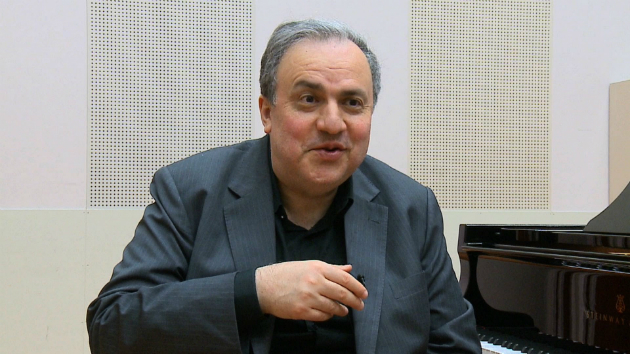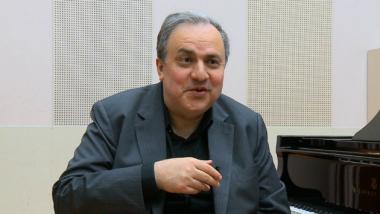
When do you really want to hear a composer’s entire body of works in a single genre? Complete works mania, a product of our recording-technology age and unsubtle attempts by arts presenters to turn a concert into an “event,” can be hard slogs for the audience. Yet, the Beethoven piano sonatas, with their kaleidoscopic range and biographical significance, make a strong case for being heard in a complete cycle.
Less arduous but hardly less ambitious is Uzbek-born pianist Yefim Bronfman’s survey of the complete Prokofiev Piano Sonatas, which began Jan. 23 at Hertz Hall on the UC Berkeley campus. Like the larger Beethoven corpus, Prokofiev’s nine sonatas span the composer’s entire career through tumultuous times, with two World Wars and the Bolshevik Revolution, and they illustrate the metamorphosis of the composer and the world in which he lived.
Bronfman dove head-first into the ambitious Opus 1 triumphantly. Prokofiev may have only been 16, but his first opus proclaimed his valor, however naïve. The cascading octaves were fireworks, and Bronfman painted its Rachmaninoff-like lyricism with thick brushstrokes in bold colors. There was no shortage of power and richness from the American Steinway under his hands. Underneath the boldly projected lyrical lines, Bronfman carefully placed layer upon layer of decisively sculpted lines, while letting the treble shimmer and the bass firmly anchor the architecture.
Such may be Bronfman’s signature style, but his tremendous power never came with any harshness. Underneath the boldly projected lyrical lines, Bronfman carefully placed layer upon layer of decisively sculpted lines, while letting the treble shimmer and the bass firmly anchor the architecture. Particularly in the Sonata No.2, Op.14, which somewhat resembles the composer’s second Concerto, Op.16, in character, Prokofiev’s evolving language, rich with irony and sarcasm, came alive. Punches and shoves abounded, various characters and sentiments leaped out along with a few giggles.
Through the subsequent sonatas, No.3 and No.4, Bronfman’s suaveness and utmost confidence seemed to command all the technical challenges and landmines to simply move aside, and let the train pass. The knottiest of passages went by so uneventfully and, often, so quickly that some of the discomfort, clashes, and conflicts that pepper the score were absent. The tarantella-like themes in the last movement of the second sonata, and the single-movement third sonata lacked rhythmic tension. Perhaps to compensate for the relatively dry acoustics of the hall, Bronfman’s pedaling too often smoothed over the score’s spikes and thorns.
Yet the dread and heaviness in the Sonata No.4, perhaps more Nikolai Medtner than the melancholic Rachmaninoff, had a cinematic quality told through the musical narrative. The graveness seemed to reflect the death of Prokofiev’s close friend, Maximilian Schmidthof, who took his own life in 1913 and to whom the piece is dedicated. The shimmering sixteenth notes added sparkles to the heavy theme in the second movement, and the jovial dissonances were humorous, albeit, again, a tad hurried in the last movement.
Bronfman will return in March to complete the survey over two more performances. I look forward to continue through the survey through the most tumultuous period of the composer’s life and how the changing world affected him.

